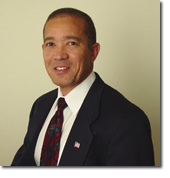At my Education Policy Center friends’ recent series of Colorado school board candidate briefings, one of the local reforms they highlighted was Harrison School District Two’s groundbreaking pay-for-performance system, known as Effectiveness and Results (E & R). Well, who knew during the briefings that a little sensational news would give certain local bloggers a platform to bash performance pay?
 Let’s help put the overeager presumption to rest. First, Harrison superintendent Mike Miles points out that the Sierra High School student walkout is not the first of its kind in the district, and that its connection to the performance pay changes is tenuous at best. Second, as Ben DeGrow noted earlier this year in his issue paper Pioneering Teacher Compensation Reform, Miles emphasizes the comprehensive approach to performance pay. Effectively overhauling established, inefficient teacher compensation structures is extremely difficult without also taking on other key changes, like Harrison has done:
Let’s help put the overeager presumption to rest. First, Harrison superintendent Mike Miles points out that the Sierra High School student walkout is not the first of its kind in the district, and that its connection to the performance pay changes is tenuous at best. Second, as Ben DeGrow noted earlier this year in his issue paper Pioneering Teacher Compensation Reform, Miles emphasizes the comprehensive approach to performance pay. Effectively overhauling established, inefficient teacher compensation structures is extremely difficult without also taking on other key changes, like Harrison has done:
- Implementing an evaluation system that emphasizes regular observation and ties to improved student outcomes, like the one highlighted in the new Education Trust report Fair to Everyone (PDF);
- Training principals to be more effective and accountable instructional leaders;
- Creating a district-wide culture of high and rigorous expectations for students, and a culture of professional feedback between teachers and evaluators focused on regular improvement of instructional practices;
- Developing and using internal common assessments of student performance that provide more useful and meaningful measurements of all teachers’ classroom effectiveness;
- Providing focused and coherent professional development opportunities for classroom instructors to improve their craft; and
- Implementing a district data system that provides accurate and timely information to teachers and principals to focus on instructional quality and student learning.
All that to say it’s challenging work that takes times and comes with its share of bumps in the road, but most signs in Harrison at this point are positive. A spring survey of community members found a majority in support of the changes.
Many teachers appear to have embraced the changes as well. Superintendent Miles told Ben DeGrow in a Tuesday phone conversation that the district’s teacher turnover rate increased slightly from about 20 percent to 25 percent, which he attributes to a few factors: 1) More Teach for America faculty, many of whom move on after their 2-year assignments; 2) struggling teachers who decided to move on; and 3) a small number of senior proficient teachers who departed the district in part because they didn’t get an automatic pay promotion.
The next few years will help show us if a less experienced instructional workforce can be more effective in the right systems and conditions provided in Harrison. “We have to be okay with high [teacher] mobility as long as our achievement is going up,” Miles said.
The round of state testing done at the end of the first year of E & R showed amazing results for some Harrison schools, not so much for others. It’s too early to tell what the overall impact of the new system will be — not to mention more changes underway in the latest Harrison 5-year plan.
But Superintendent Miles remains emphatic that E & R isn’t taking place for its own sake, but because he expects it to continue producing results. “Pay-for-performance is a vehicle and not an end in itself,” Miles told DeGrow. “The end is achievement, and always has been.”
There’s a reason why Ohio reformers are looking closely at Harrison as a model to guide teacher policy changes in their own state. And that’s because the bold move is showing early signs of success.






